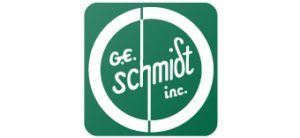Cause: Incorrect Testing Procedures
Not following the specified test procedure for determining the characteristics of a resistance weld.
Description
The following are examples of tests used for determining resistance weld characteristics. Care must be taken to apply the correct test procedure according to the customers’ needs.
Non-destructive tests generally used in production to reduce expensive destructive tests are:
- Pry check or pry test, also called chisel check and driver check
- Visual check
- Ultrasonic (less frequently used)
- Radiographic or X-ray (less frequently used)
Destructive tests are used in instances where:
- Only practical method (e.g., welds inaccessible to non-destructive tests)
- Lab characterization of weld
- Verification of production weld consistency
Examples of destructive tests:
- Destructive tear down with button diameter measurements
- Tension-shear test
- Tension test
- Cross-tension test
- U-tension test
- Impact test
- Shear-impact test
- Drop-impact test
- Fatigue test
- Macroetch test
- Torsional test
- Hardness test
- Peel test
- Bend test
Test criteria are usually dictated by company standards. Additionally, control limits may be established using statistical analyses of data acquired from test procedures listed above.
Detection
Incorrect test procedure application may be detected by the following:
- Brittle weld
- Excessive indentation
- Extra welds
- Inconsistent weld quality
- Interfacial separation
- Mislocated/edge weld
- Missing weld
- Non-round weld
- Poor Class A appearance
- Sheet metal distortion
- Undersized weld
- High reject rate
- Inability to correct the nonconformity
- Nontypical failure mode
- Quality audit
Significance
Quality, Workplace Issues, Cost, Downtime, Maintenance, Throughput (cycle time; PPH), are all potentially affected by this condition.
Subordinate Causes
- Application of incorrect test, standard, or procedure
- Incorrect application of proper test
- Incorrect test equipment
- Equipment out of calibration
- Inadequate training


